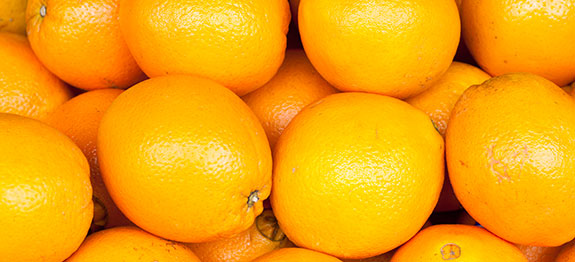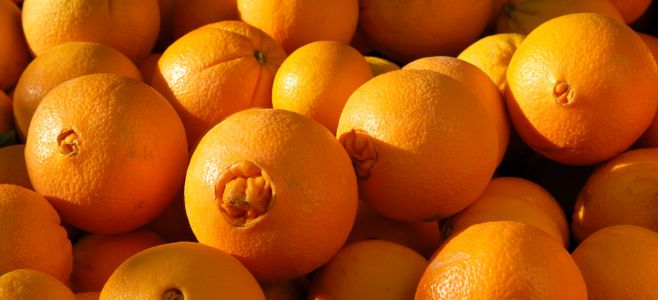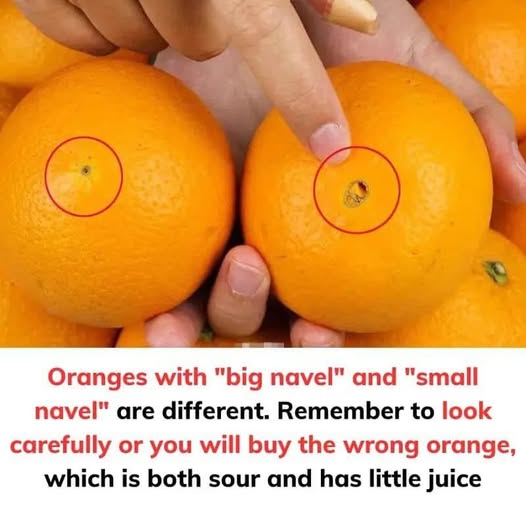Oranges are one of the most popular fruits around the world—loved for their sweet taste, juicy texture, and health benefits. But did you know that not all oranges are the same? If you’ve ever taken a closer look, you might have noticed that some oranges have large navels at the bottom, while others have smaller ones. While it might seem like a minor difference, the size of the navel can actually tell you a lot about the fruit.
What Is a Navel Orange?
Navel oranges are a type of seedless orange that naturally grow with a second, undeveloped “twin” fruit embedded at the bottom, forming what looks like a human belly button or “navel.” This second fruit doesn’t grow fully but causes a bulge that creates the navel-like shape. These oranges are especially easy to peel and very sweet, making them ideal for snacking and juicing. However, the size of the navel can give clues about the fruit’s internal condition and flavor.

Large Navel vs. Small Navel: What’s the Difference?
Large Navel Oranges:
Oranges with larger navels tend to have more space taken up by the secondary fruit. This can sometimes mean less juicy flesh and a slightly drier texture, especially if the orange is overripe. In some cases, larger navels are associated with a shorter shelf life and a faster ripening process. However, many people find that large navel oranges are incredibly easy to peel and great for quick snacking, particularly for children or anyone looking for a mess-free option.
Small Navel Oranges:
Oranges with smaller navels typically have a better balance of juice and flesh. They tend to be more densely packed, juicier, and have a richer citrus flavor. These are preferred for juicing or using in recipes where moisture and flavor are important. Smaller navels are also a sign that the orange may have developed more evenly, making it less likely to have dry spots or air pockets.
Which One Should You Choose?
The answer depends on what you’re using the orange for:
- For eating fresh: Choose a large navel orange if you want something easy to peel and snack on quickly.
- For juicing or cooking: Opt for a small navel orange, which usually contains more juice and flavor.
- Both types offer health benefits like vitamin C, antioxidants, and fiber—so no matter which you choose, you’re making a healthy choice.
How to Store Oranges Properly
To keep your oranges fresh for longer, store them in a cool, dry place. If you don’t plan to eat them within a few days, it’s best to refrigerate them to preserve their flavor and juiciness. Always check for mold or soft spots, especially near the navel.

Conclusion: Small Details Matter
The size of an orange’s navel may seem like a minor feature, but it actually provides useful insights into the fruit’s quality, taste, and ideal use. By learning to recognize the difference between large and small navel oranges, you can make smarter, tastier choices—whether you’re snacking, juicing, or cooking.

















